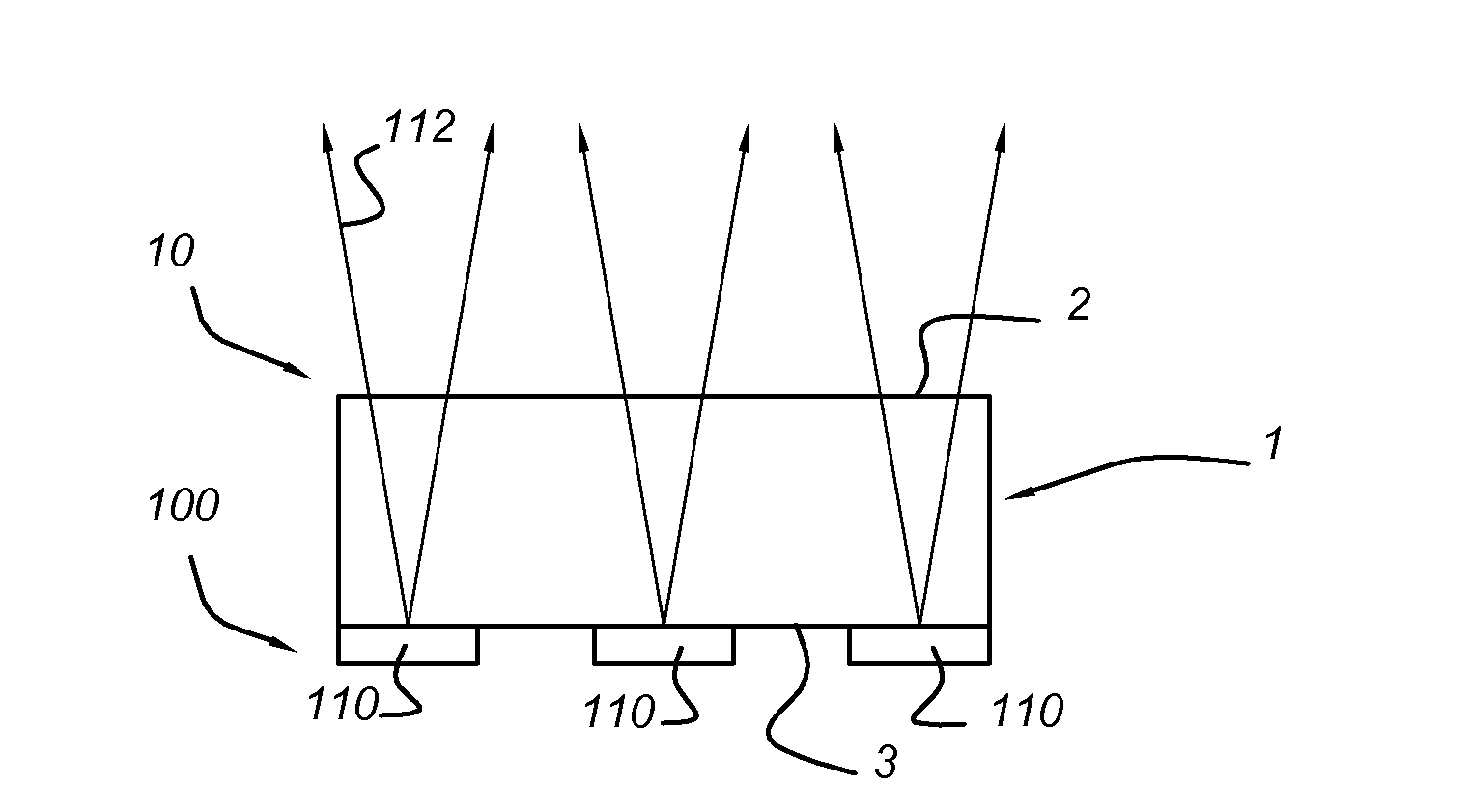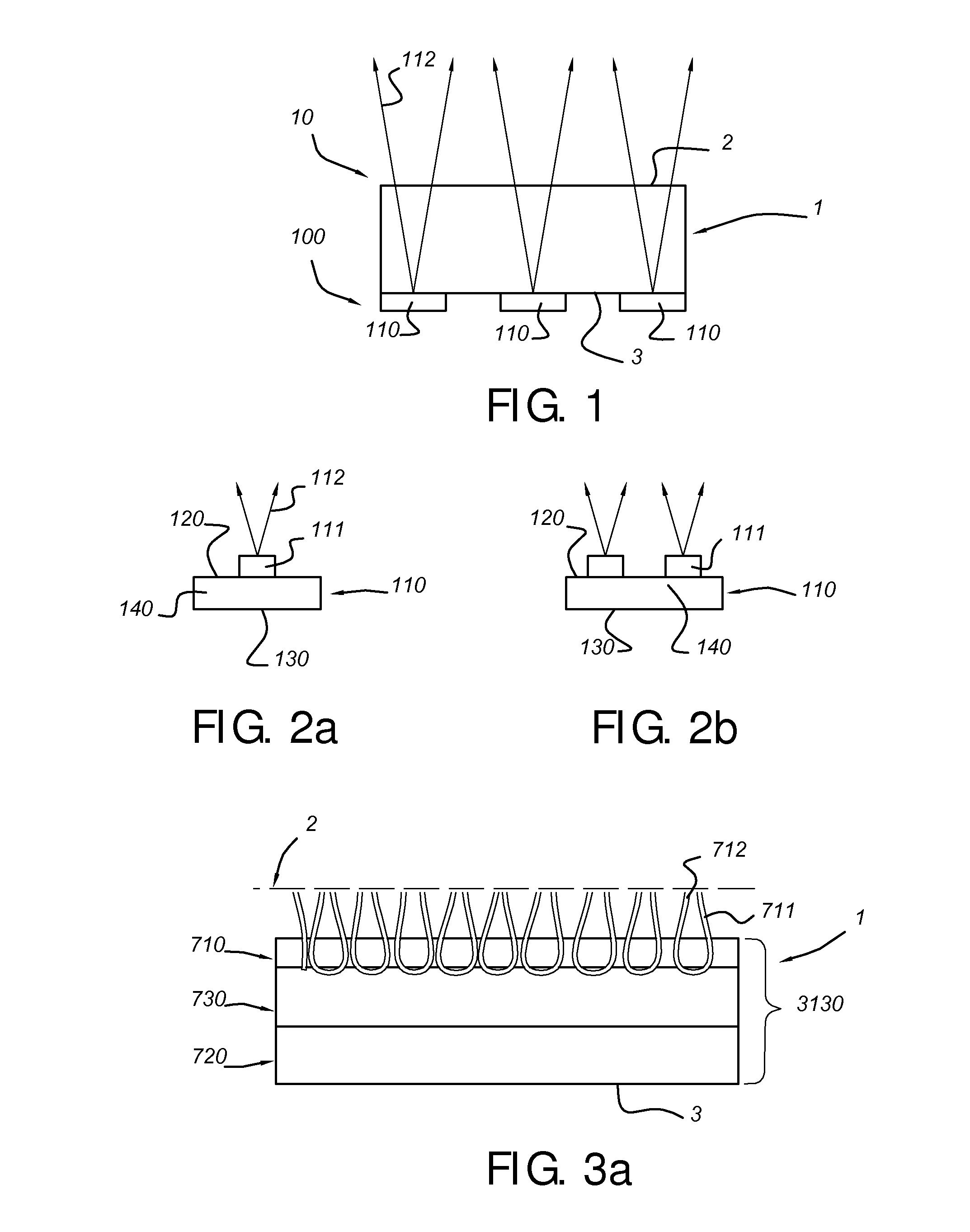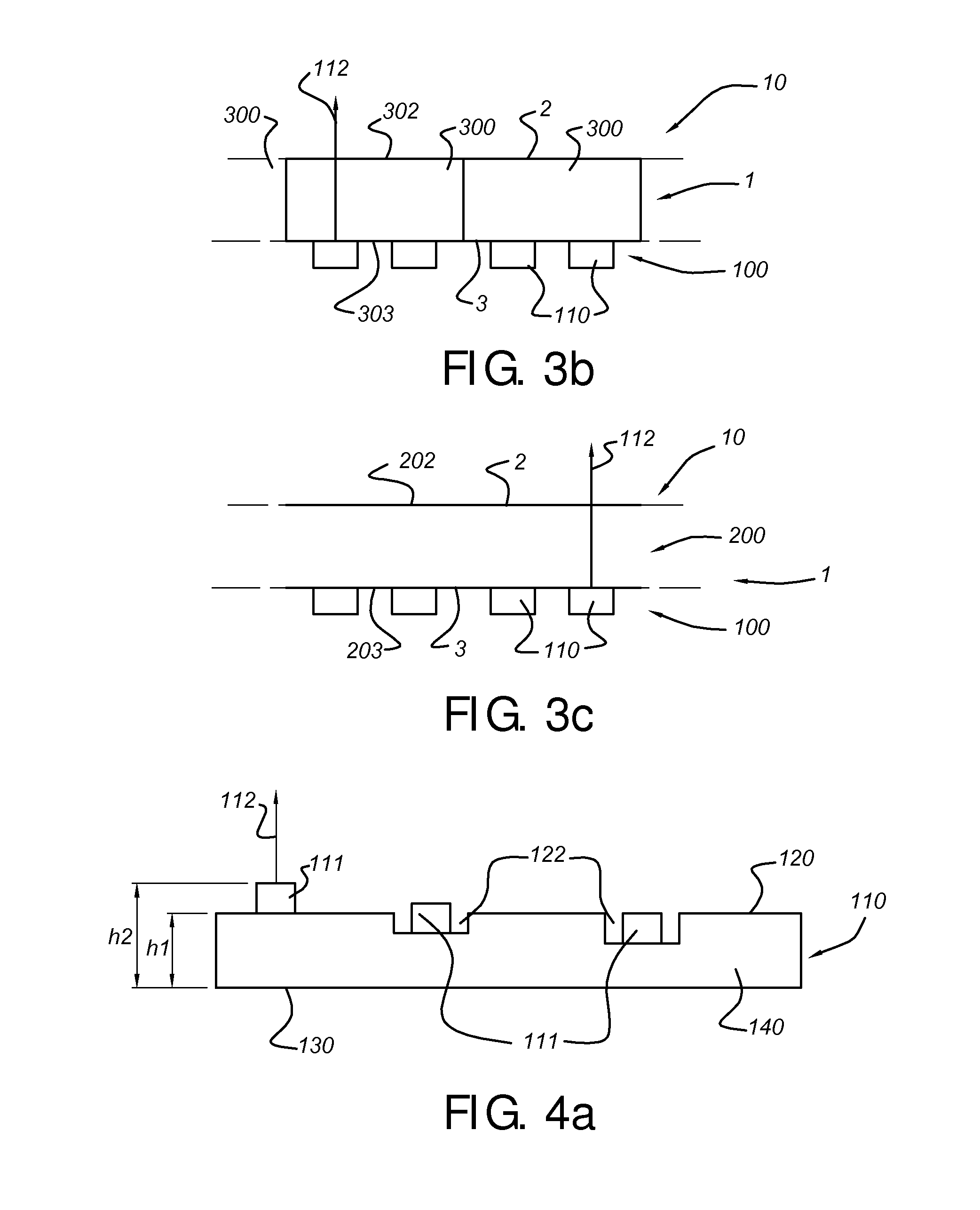Carpet unit comprising optical sensor
a technology of optical sensors and carpets, applied in the field of carpet units, can solve the problems of inability to use and inability to achieve optical fibers that stick through carpets, etc., to achieve the effect of reducing light absorption, facilitating light outcoupling, and improving light distribution
- Summary
- Abstract
- Description
- Claims
- Application Information
AI Technical Summary
Benefits of technology
Problems solved by technology
Method used
Image
Examples
Embodiment Construction
[0118]FIG. 1 schematically depicts a carpet unit 1, such as a carpet, a carpet tile, or a plurality of carpet tiles. The carpet unit has carpet unit front face 2, on which people may for instance walk, and which is in general directed to the user(s) of the carpet unit 1, and a carpet unit back side 3.
[0119]By way of example, lighting units 110 are depicted, which are, in this schematically depicted embodiment, arranged at the back side 3 of the carpet unit 1.
[0120]An advantage of arranging the lighting units at the back side 3 is that the lighting units can be separate from the carpet unit. This allows the lighting units to be re-arranged and replaced at any time in future and this also reduces the cost for the total system, because no standardized carpet+lighting combination needs to be made. In the remainder of this description we will focus on a lighting unit placed at the back side of the carpet unit, and wherein the lighting unit is separate from the carpet unit. However, it sh...
PUM
| Property | Measurement | Unit |
|---|---|---|
| height | aaaaa | aaaaa |
| height | aaaaa | aaaaa |
| temperature | aaaaa | aaaaa |
Abstract
Description
Claims
Application Information
 Login to View More
Login to View More - R&D
- Intellectual Property
- Life Sciences
- Materials
- Tech Scout
- Unparalleled Data Quality
- Higher Quality Content
- 60% Fewer Hallucinations
Browse by: Latest US Patents, China's latest patents, Technical Efficacy Thesaurus, Application Domain, Technology Topic, Popular Technical Reports.
© 2025 PatSnap. All rights reserved.Legal|Privacy policy|Modern Slavery Act Transparency Statement|Sitemap|About US| Contact US: help@patsnap.com



